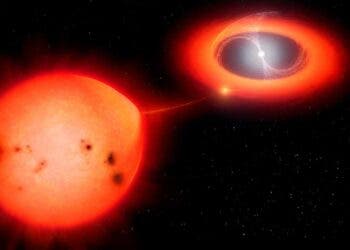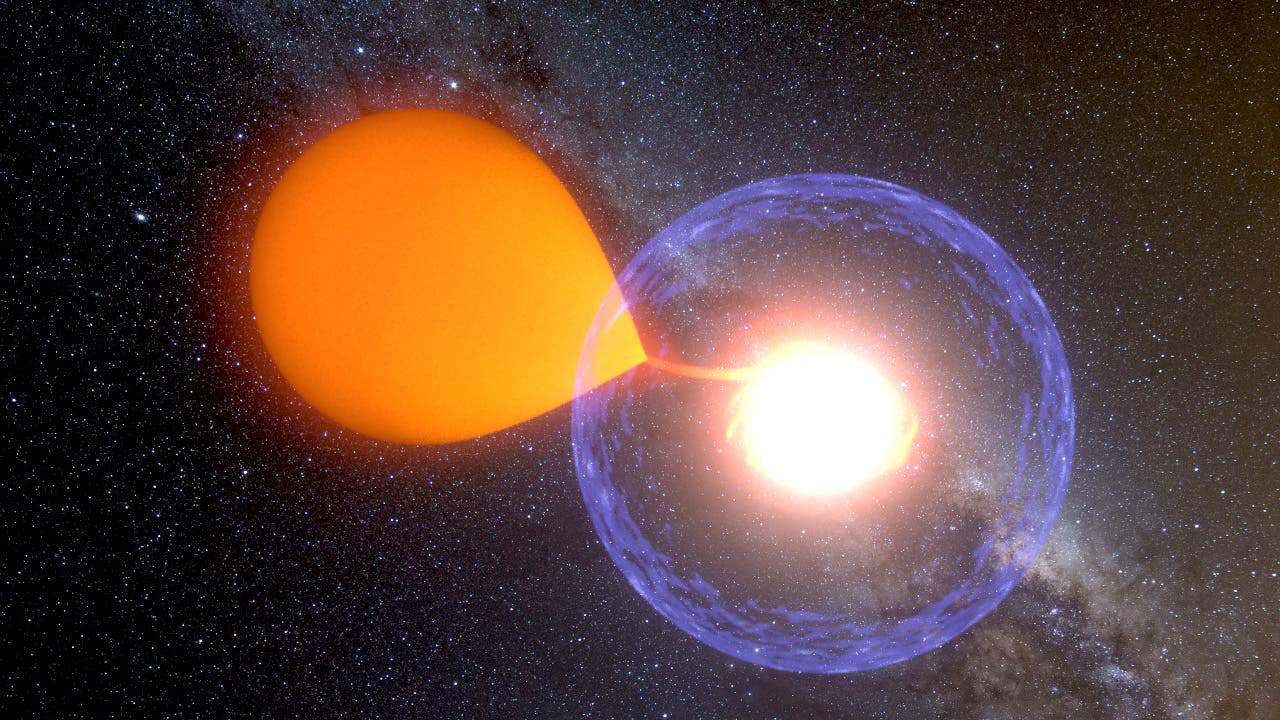
This September, a rare celestial event will captivate astronomers and stargazers worldwide. The anticipated explosion of T Coronae Borealis, or the “Blaze Star,” will be visible to the naked eye from Earth.
T Coronae Borealis, also coined “T CrB” by astronomers, located in the Corona Borealis constellation, is about 3,000 light-years from Earth. This binary star system, consisting of a white dwarf and a red giant, experiences periodic nova explosions approximately every 80 years. The last recorded explosion was in 1946. The first recorded sighting of T Coronae Borealis was in 1217 by Burchard, abbot of Ursberg, Germany.
Rebekah Hounsell, an assistant research scientist at NASA’s Goddard Space Flight Center, emphasizes the significance of this event.
“It’s a once-in-a-lifetime event that will create a lot of new astronomers, giving young people a cosmic event they can observe, ask questions about, and collect data from,” she says. “There are a few recurrent novae with very short cycles, but typically, we don’t often see a repeated outburst in a human lifetime, and rarely one so relatively close to our own system. It’s incredibly exciting to have this front-row seat.”
T CrB consists of a white dwarf—an Earth-sized dense remnant of a dead star—and a red giant, an ancient star being stripped of hydrogen by its smaller but more gravitationally powerful neighbor. This ongoing interaction causes hydrogen to accumulate on the surface of the white dwarf, eventually leading to a thermonuclear explosion powerful enough to blast away the accreted material, creating a nova. Unlike supernovae, which destroy the star, a nova event allows the white dwarf to survive and continue the cycle, potentially repeating the process for tens of thousands of years.
The anticipation surrounding the upcoming nova is heightened by the opportunity for public observation. The constellation, also called the “Northern Crown”, is a horseshoe-shaped constellation west of the Hercules constellation. This can be located by scanning between the bright stars Vega and Arcturus. Once the eruption occurs, the nova will be visible to the naked eye for nearly a week.
“We’ll observe the nova event at its peak and through its decline,” Hounsell said. “Early data collected by citizen scientists will contribute significantly to our findings.”

“Citizen scientists and space enthusiasts look for strong, bright signals that identify nova events and other phenomena,” said Elizabeth Hays, chief of the Astroparticle Physics Laboratory at Goddard. “They send out instant alerts via social media and email. We’re counting on that global community interaction again with T CrB.”
NASA’s Fermi Gamma-ray Space Telescope, along with other missions such as the James Webb Space Telescope, Neil Gehrels Swift Observatory, and various ground-based telescopes, will also track the nova.
“Recurrent novae are unpredictable and contrarian,” said Koji Mukai, Goddard astrophysics researcher. “When you think there can’t possibly be a reason they follow a certain set pattern, they do – and as soon as you start to rely on them repeating the same pattern, they deviate from it completely. We’ll see how T CrB behaves.”






